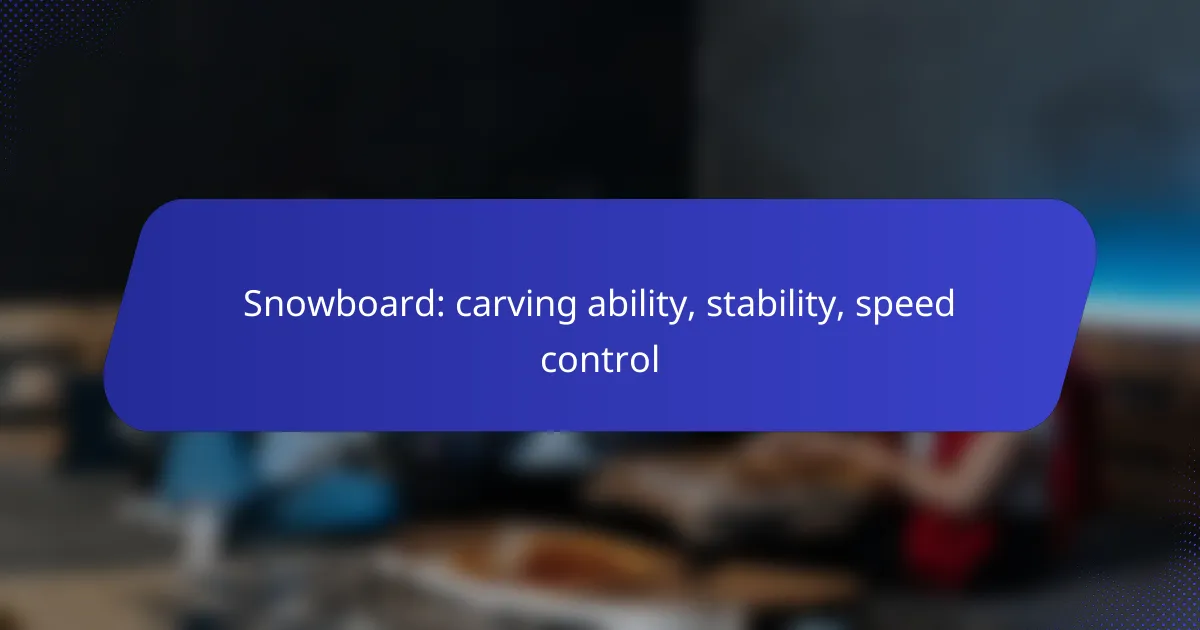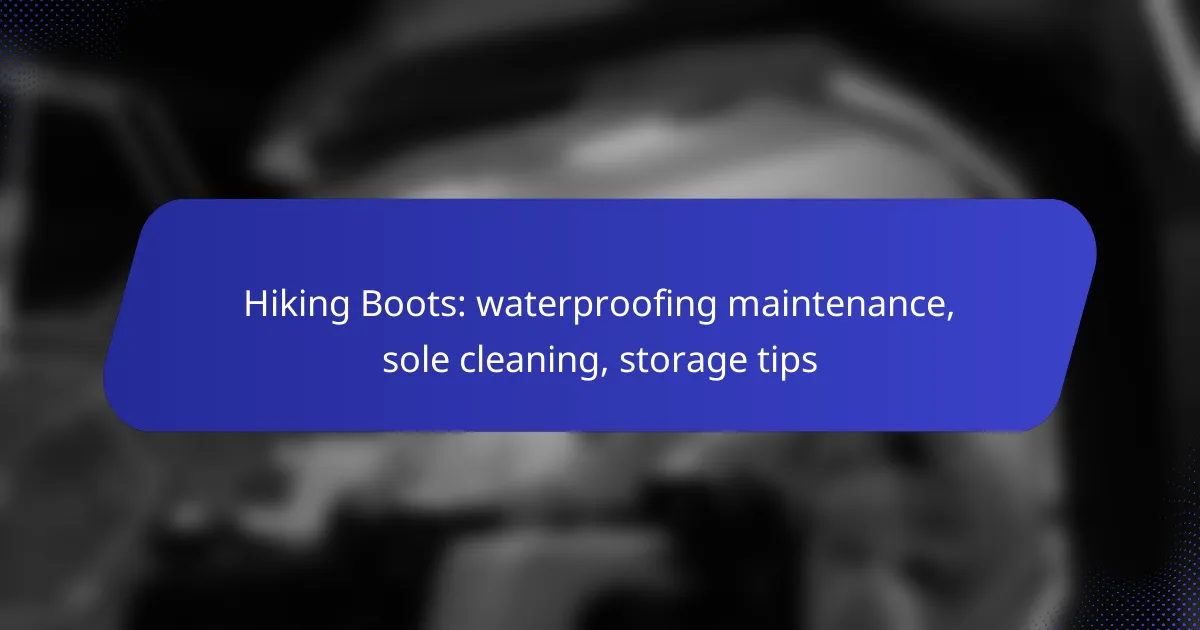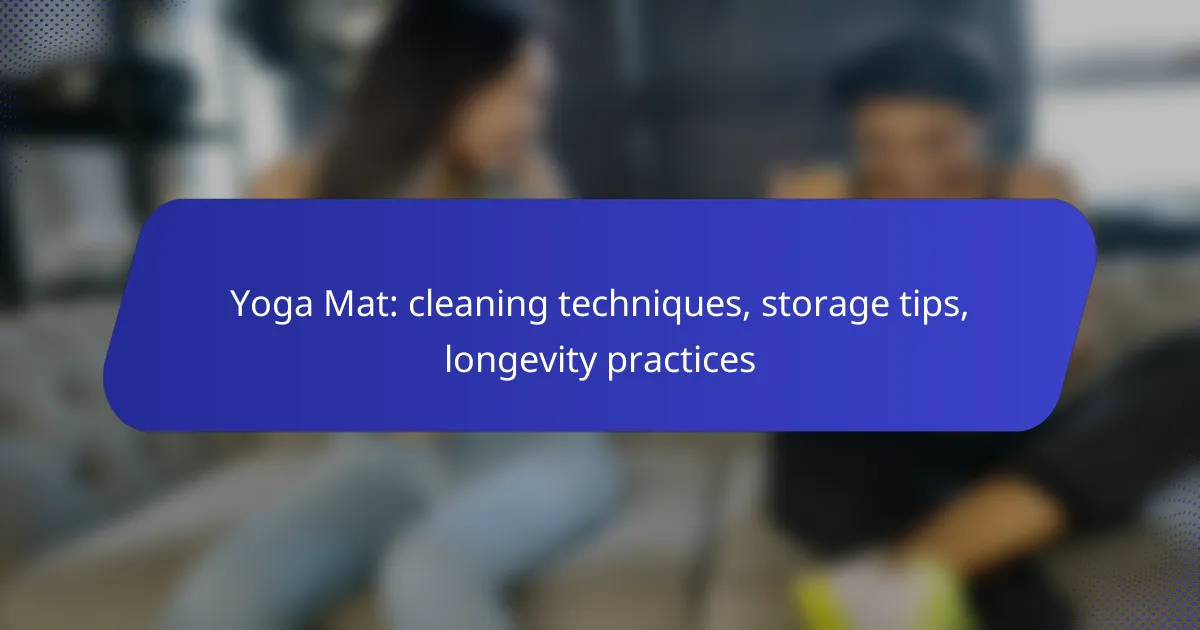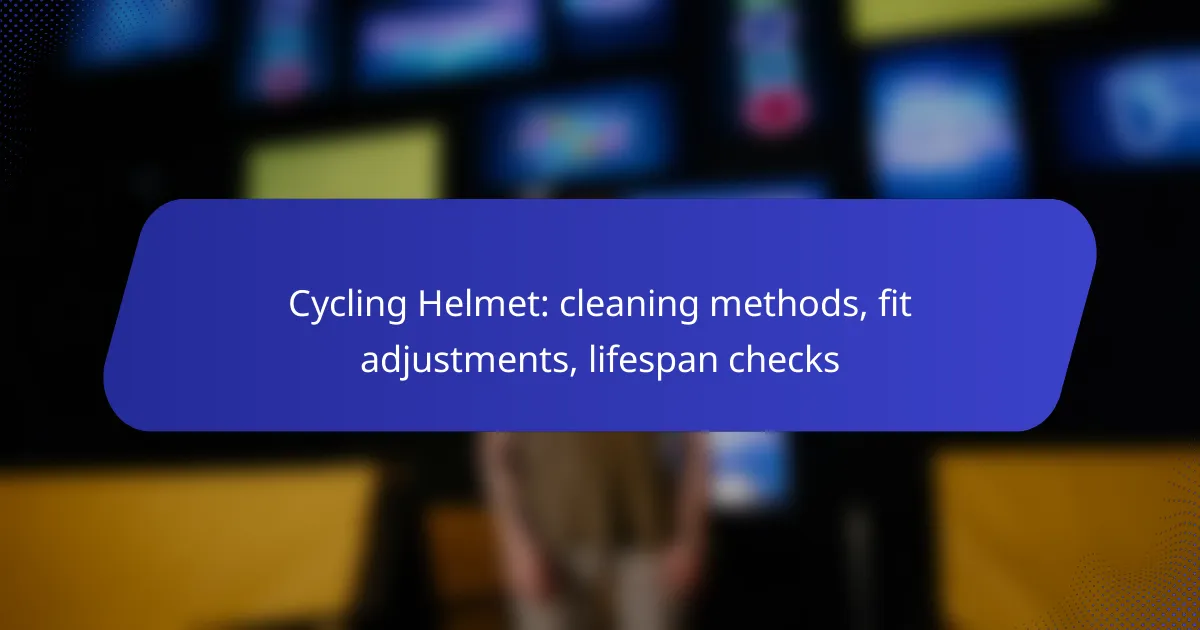Carving ability is essential for snowboarders, as it enhances control and stability during turns, leading to improved speed management. Factors such as board width, length, and flex rating play a crucial role in determining a snowboard’s stability, which is vital for a smooth ride. Additionally, mastering speed control techniques allows riders to navigate slopes confidently and safely, minimizing the risk of accidents.
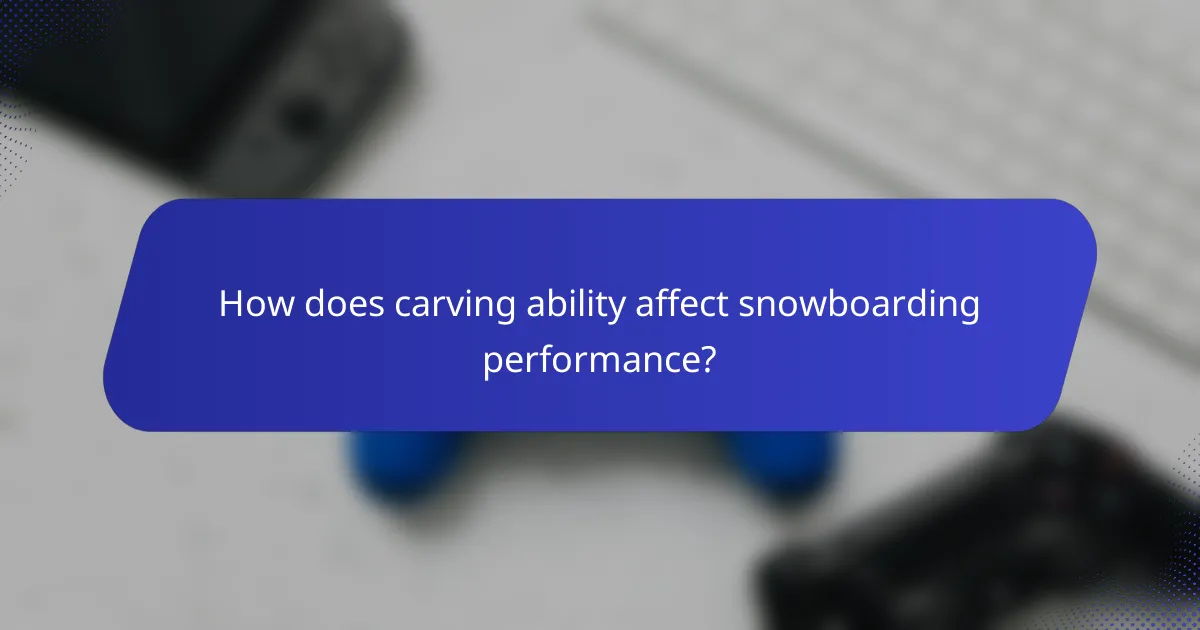
How does carving ability affect snowboarding performance?
Carving ability significantly enhances snowboarding performance by allowing riders to maintain better control and stability while turning. This skill enables snowboarders to execute precise movements, leading to improved speed management and overall ride quality.
Improved edge control
Effective carving relies on the snowboard’s edges gripping the snow, which enhances edge control. This control allows riders to navigate varied terrain more confidently, reducing the risk of slipping or losing balance. Riders should focus on shifting their weight appropriately to maximize edge engagement during turns.
To improve edge control, practice making smooth, gradual turns rather than abrupt movements. This technique helps maintain a consistent pressure on the edges, resulting in better grip and stability.
Enhanced turning precision
Carving improves turning precision by allowing snowboarders to make tighter and more accurate turns. When a rider carves, the board’s shape and flex work together to create a controlled arc, which helps in navigating through obstacles or changing directions quickly.
To enhance turning precision, snowboarders should practice initiating turns with their hips and shoulders, aligning their body movements with the desired direction. This alignment helps maintain balance and control throughout the turn.
Increased speed during turns
Carving can lead to increased speed during turns by reducing friction and maintaining momentum. When executed correctly, a carved turn allows the snowboarder to glide smoothly, minimizing drag and maximizing speed. This technique is particularly beneficial on groomed runs where speed is essential.
To safely increase speed while carving, riders should gradually build confidence and skill. Start with gentle slopes and progressively tackle steeper terrain as your carving ability improves. Always be mindful of your surroundings and other riders to ensure a safe experience.

What factors contribute to snowboard stability?
Snowboard stability is influenced by several key factors, including board width and length, flex rating and construction materials, as well as rider stance and weight distribution. Understanding these elements can help you choose the right snowboard for a more controlled and stable ride.
Board width and length
The width and length of a snowboard significantly affect its stability. A wider board provides more surface area, which can enhance balance, particularly for riders with larger feet. Conversely, a longer board typically offers better stability at high speeds, making it ideal for advanced riders who enjoy carving.
When selecting a board, consider your height and weight to find the appropriate length. Generally, boards should reach between your chin and nose when stood on end. For width, ensure your boots do not hang excessively over the edges to avoid toe or heel drag during turns.
Flex rating and construction materials
The flex rating of a snowboard indicates its stiffness, which directly impacts stability. Softer boards are easier to maneuver and better suited for beginners, while stiffer boards provide enhanced stability at higher speeds and in challenging conditions.
Construction materials also play a role; boards made with high-quality materials like carbon fiber or bamboo tend to be lighter and more responsive. This can improve stability by allowing for quicker adjustments during rides. Look for boards that balance flex and material quality based on your riding style.
Rider stance and weight distribution
Your stance and how you distribute your weight on the board are crucial for maintaining stability. A centered stance generally offers better balance, while a slightly forward or backward stance can help with control during turns or jumps.
Experiment with your stance width and angle to find what feels most comfortable. Ensure your weight is evenly distributed between your feet to prevent tipping or losing control. Regularly check your posture while riding to maintain optimal stability and performance.
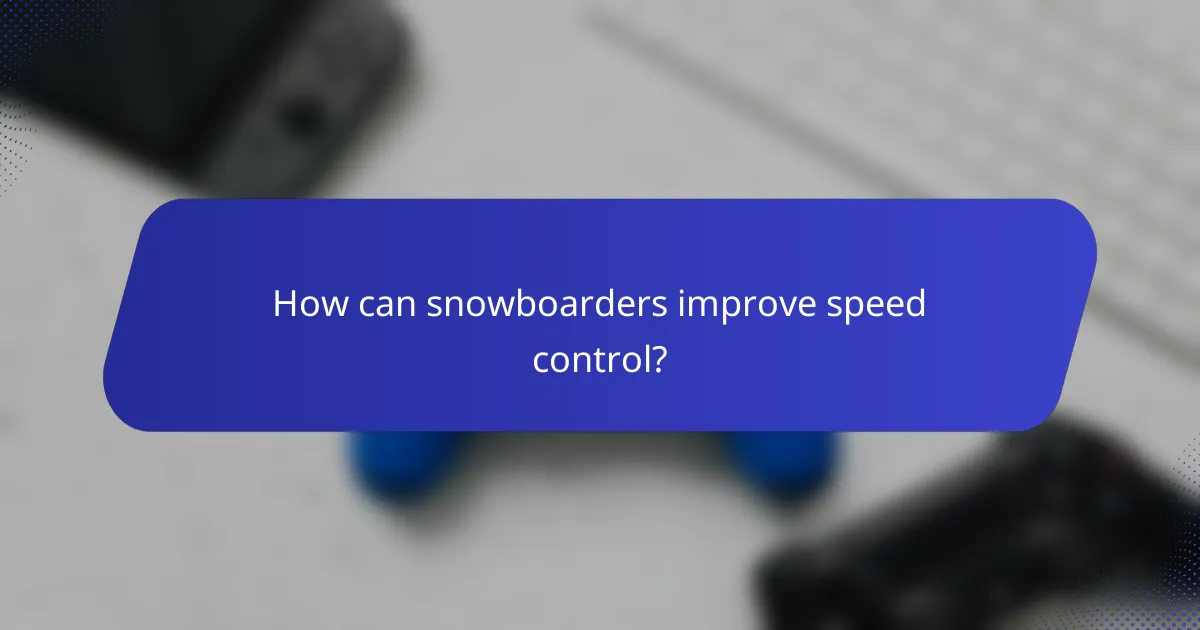
How can snowboarders improve speed control?
Snowboarders can enhance speed control through various techniques, equipment choices, and adjustments to their stance. Mastering these elements allows riders to navigate slopes more safely and confidently, reducing the risk of accidents.
Techniques for effective braking
Effective braking techniques are crucial for controlling speed on the slopes. Carving turns and using the edges of the snowboard can help slow down naturally. Additionally, the “pizza” technique, where the board is angled to create a wedge shape, is particularly useful for beginners.
Riders should practice transitioning between turns smoothly to maintain control. Frequent practice on gentle slopes can build confidence and improve braking skills without the pressure of high speeds.
Choosing the right board type
The type of snowboard significantly impacts speed control. All-mountain boards offer versatility for various terrains, while freestyle boards are lighter and more maneuverable, aiding in quick turns. For those focused on speed control, a board with a softer flex can provide better responsiveness.
Consider the board’s length as well; shorter boards are easier to turn and control, while longer boards offer stability at higher speeds. Riders should select a board that matches their skill level and riding style to optimize performance.
Adjusting stance and body position
Stance and body position play a vital role in speed control. A wider stance can enhance stability, while a narrower stance allows for quicker turns. Riders should experiment with their foot placement to find what feels most comfortable and effective for their style.
Maintaining a low center of gravity by bending the knees and keeping the body aligned over the board helps with balance and control. Regularly checking body posture while riding can prevent fatigue and improve overall performance on the slopes.

What are the best snowboards for carving in Canada?
The best snowboards for carving in Canada typically feature a stiffer flex, a directional shape, and a sidecut radius that enhances edge control. These characteristics allow riders to maintain stability and speed while executing sharp turns on various snow conditions.
Burton Custom X
The Burton Custom X is renowned for its precision and responsiveness, making it a top choice for serious carvers. Its stiffer flex provides excellent stability at high speeds, while the directional shape allows for smooth transitions during turns.
This snowboard features a unique combination of carbon fiber and a lightweight core, which enhances its performance without adding unnecessary weight. Riders can expect a high level of control, especially on hard-packed snow, making it ideal for carving enthusiasts.
Lib Tech T.Rice Pro
The Lib Tech T.Rice Pro is designed for versatility and performance, excelling in carving on both groomed runs and powder. Its hybrid camber profile offers a balance between stability and playfulness, allowing for aggressive turns without sacrificing control.
This board is equipped with Magne-Traction technology, which provides additional edge hold on icy surfaces, a common condition in Canadian resorts. Riders will appreciate its ability to maintain speed while carving through challenging terrain.
Salomon Assassin
The Salomon Assassin is a well-rounded snowboard that caters to both freestyle and carving riders. Its medium flex strikes a balance between playfulness and stability, making it suitable for various snow conditions.

What criteria should be considered when selecting a snowboard?
When selecting a snowboard, key criteria include riding style, terrain preference, skill level, experience, budget, and brand reputation. These factors will significantly influence your performance and enjoyment on the slopes.
Riding style and terrain preference
Your riding style and the type of terrain you prefer are crucial in choosing the right snowboard. For instance, if you enjoy freestyle riding in parks, a shorter, more flexible board is ideal. Conversely, if you prefer carving on groomed runs or tackling powder, a longer, stiffer board will offer better stability and control.
Consider the terrain you will primarily ride on. All-mountain boards are versatile for various conditions, while specific boards like powder boards excel in deep snow. Assessing your typical riding environment helps narrow down your options.
Skill level and experience
Your skill level and experience play a significant role in snowboard selection. Beginners should look for softer boards that provide more forgiveness and easier turning. Intermediate to advanced riders may prefer stiffer boards that offer enhanced stability at higher speeds and better edge control.
As you progress, consider boards that match your evolving skills. A board that suits your current level may not be ideal as you advance, so plan for future upgrades based on your growth in snowboarding.
Budget and brand reputation
Budget is a critical factor when selecting a snowboard, as prices can vary widely. Entry-level boards may cost a few hundred USD, while high-end models can exceed a thousand USD. Determine your budget early to filter options effectively.
Brand reputation also matters. Established brands often provide reliable quality and performance. Research customer reviews and expert recommendations to ensure you choose a reputable brand that aligns with your budget and performance expectations.

How do snowboard designs impact performance?
Snowboard designs significantly influence carving ability, stability, and speed control. Factors such as shape, flex, and materials determine how a snowboard performs under various conditions, affecting the rider’s overall experience.
Carving ability
Carving ability is largely determined by the snowboard’s sidecut radius and flex pattern. A tighter sidecut allows for sharper turns, making it easier to carve on groomed runs. Conversely, a longer sidecut provides more stability at high speeds, which is beneficial for freeriding.
When selecting a snowboard for carving, consider your skill level and preferred terrain. Beginners may benefit from a softer flex for easier turn initiation, while advanced riders might prefer a stiffer board for better edge hold and responsiveness during aggressive turns.
Stability
Stability is influenced by the snowboard’s width and overall design. A wider board offers more surface area, which can enhance balance and control, especially in powder or variable conditions. Additionally, a lower center of gravity can improve stability during high-speed runs.
For optimal stability, choose a board that matches your weight and foot size. Riders with larger feet should opt for wider boards to prevent toe or heel drag during turns, while lighter riders may prefer narrower boards for easier maneuverability.
Speed control
Speed control is affected by the snowboard’s construction and flex. A stiffer board typically provides better speed control at high velocities, while a softer board allows for easier speed management during slower, more technical runs. The choice of materials also plays a role in how well a board can absorb vibrations and maintain stability.
To enhance speed control, practice maintaining a balanced stance and using your edges effectively. Avoid leaning too far back, as this can lead to loss of control. Instead, focus on distributing your weight evenly across the board to maintain stability and responsiveness.
